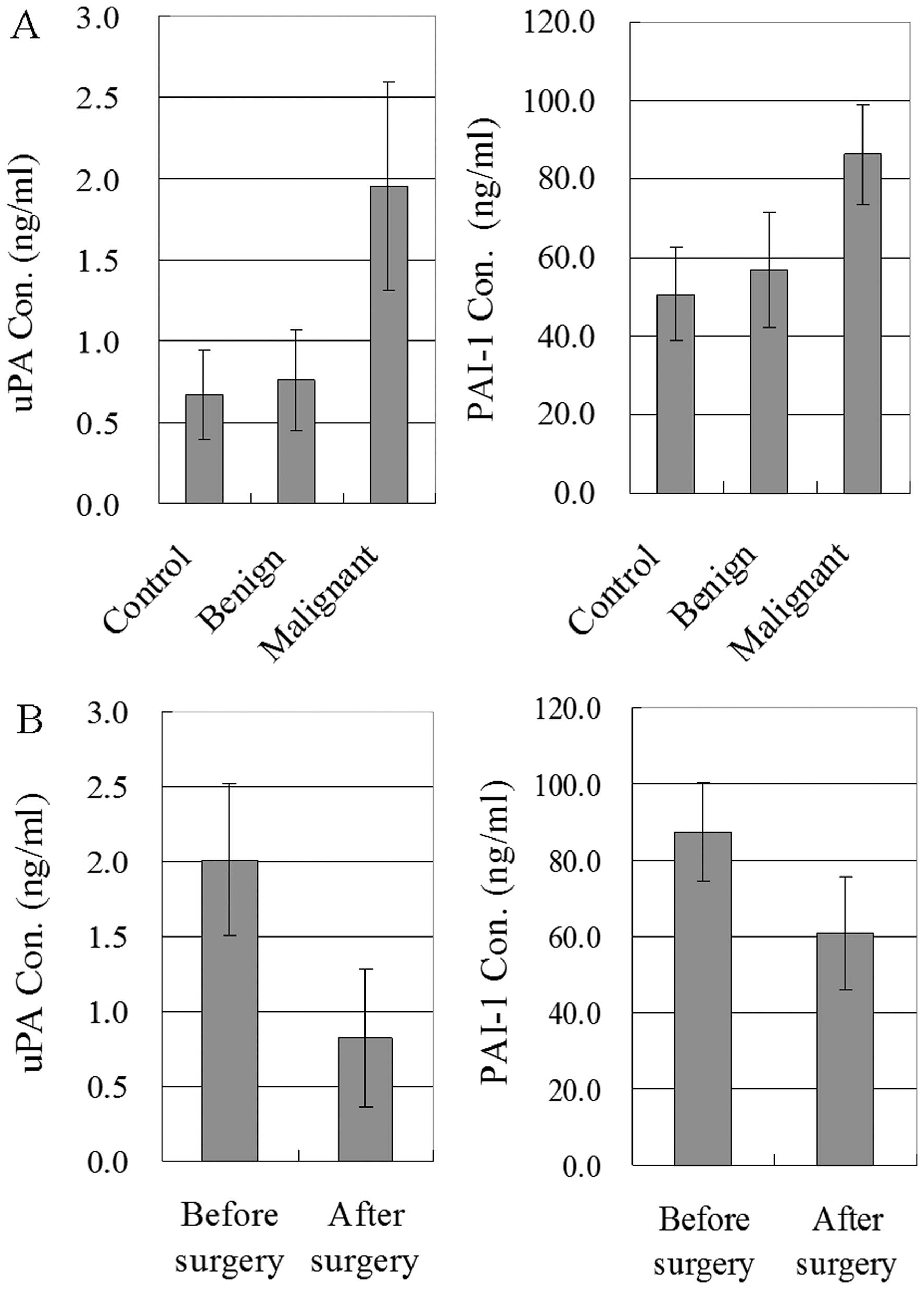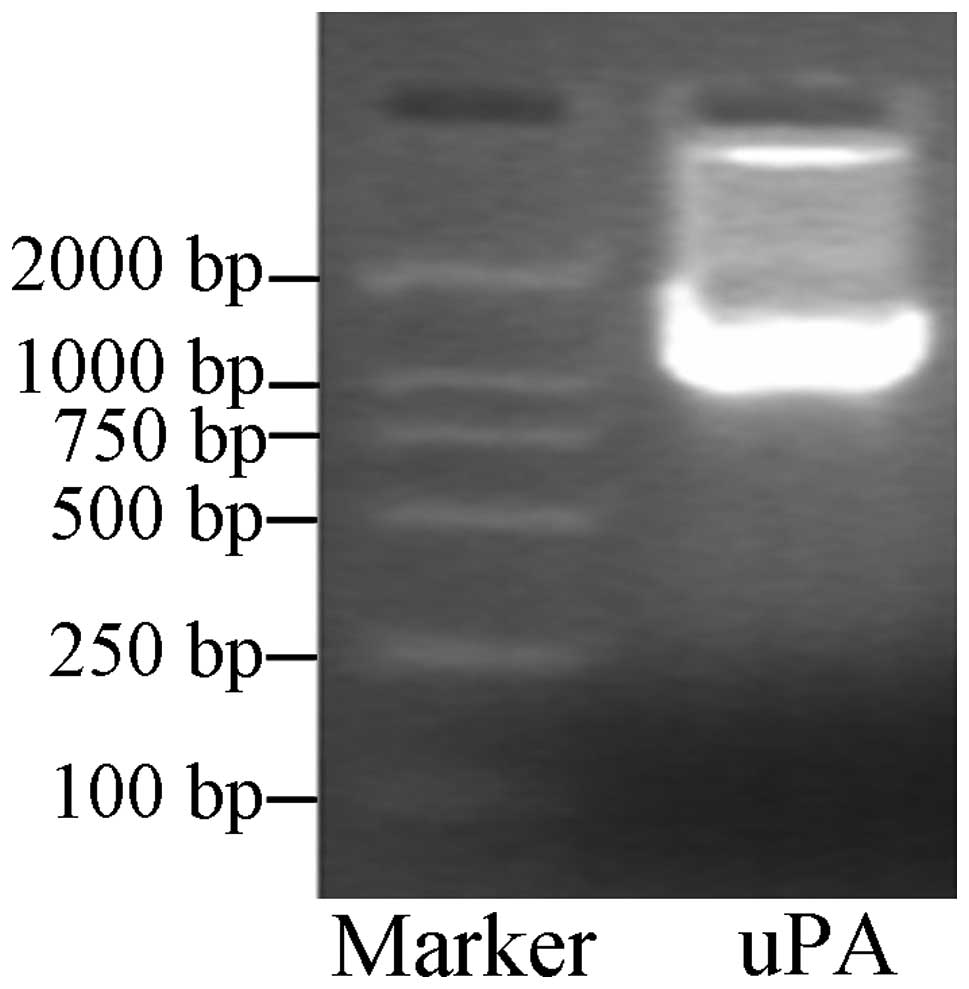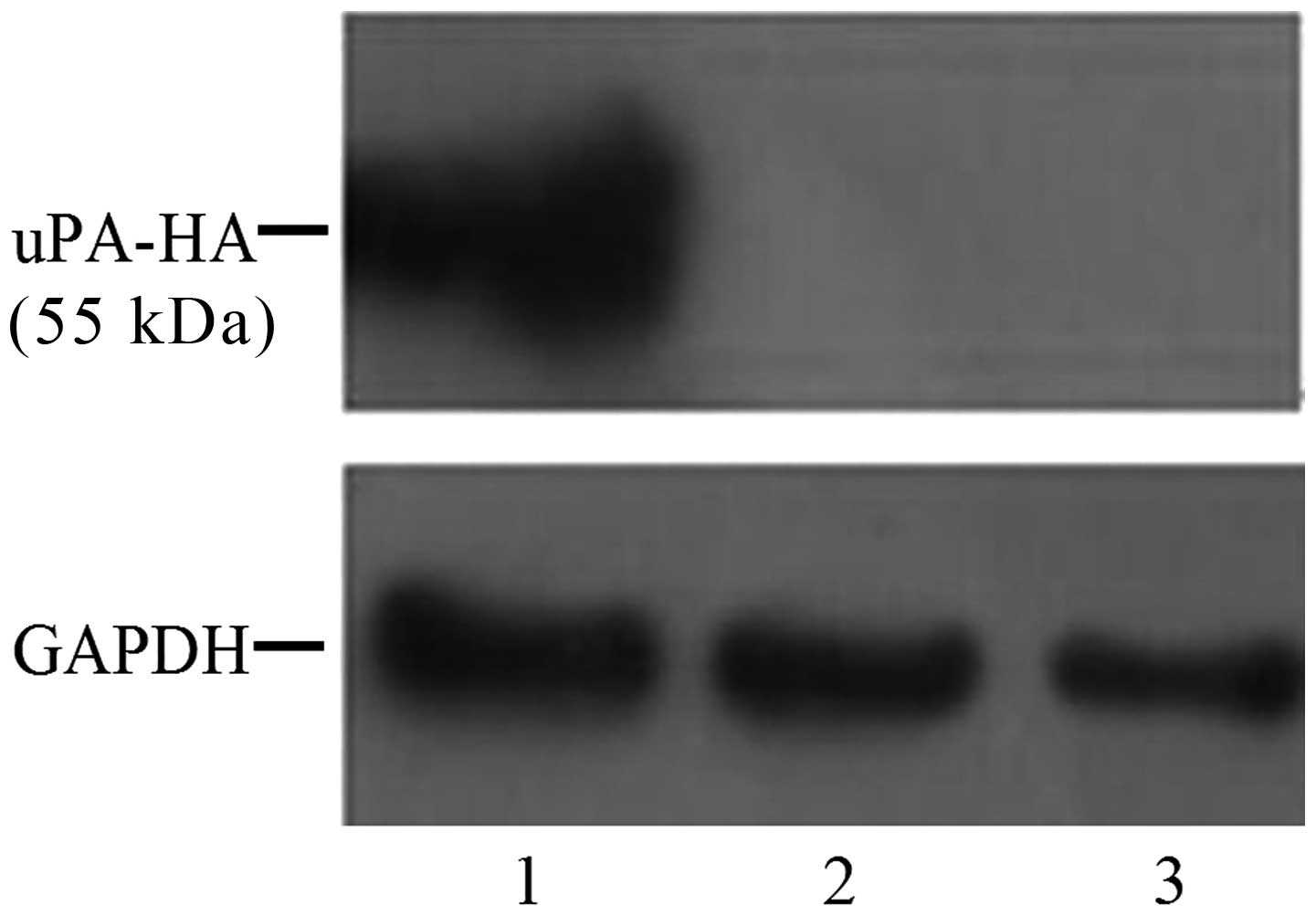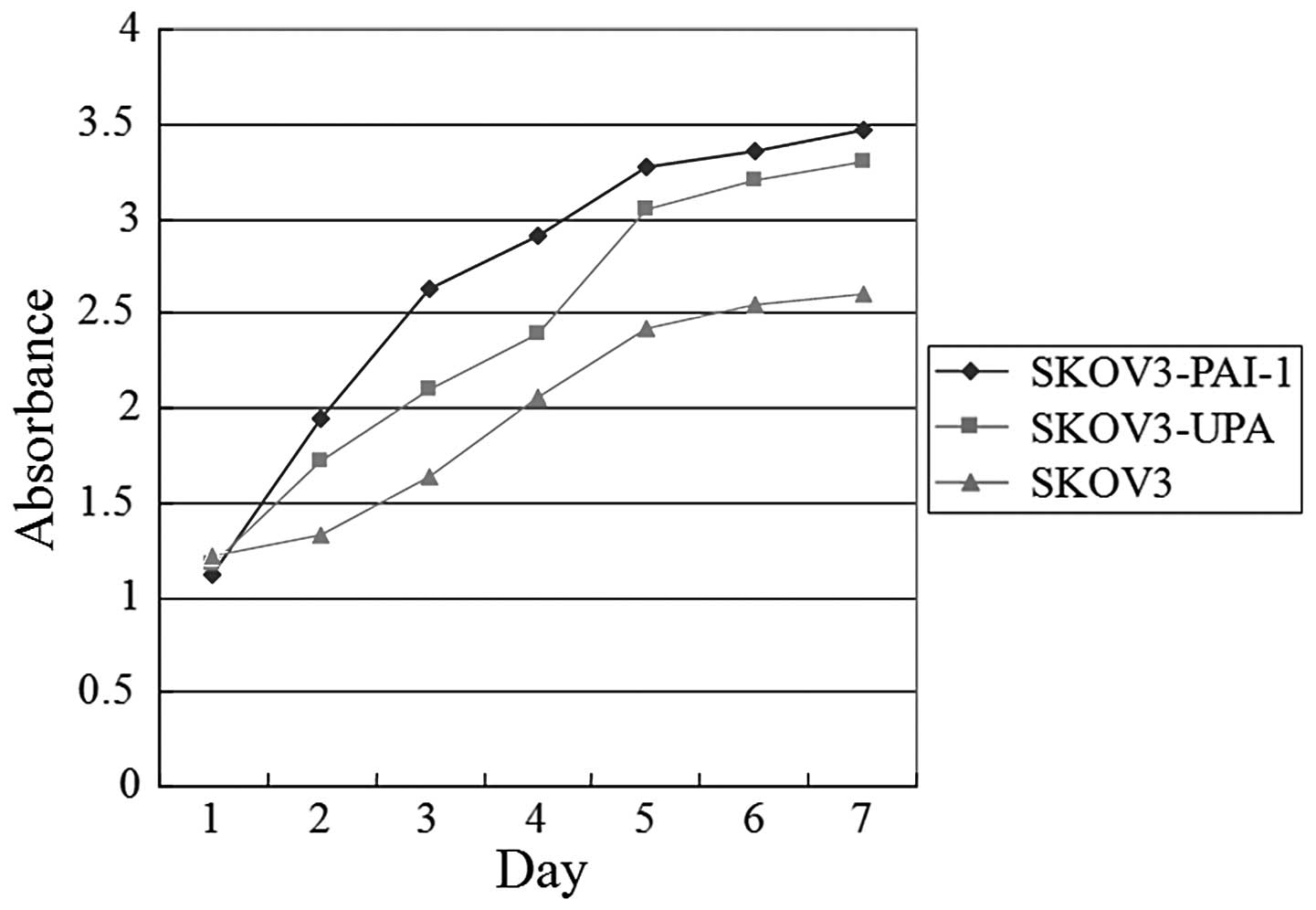|
1
|
Shaaban A and Rezvani M: Ovarian cancer:
detection and radiologic staging. Clin Obstet Gynecol. 52:73–93.
2009. View Article : Google Scholar
|
|
2
|
Chen W, Zhang S, Zou X and Zhao P: Cancer
incidence and mortality in China, 2006. Chin J Cancer Res. 23:3–9.
2011. View Article : Google Scholar
|
|
3
|
Colman RW, Wu Y and Liu Y: Mechanisms by
which cleaved kininogen inhibits endothelial cell differentiation
and signalling. Thromb Haemost. 104:875–885. 2010. View Article : Google Scholar : PubMed/NCBI
|
|
4
|
Gramling MW and Church FC: Plasminogen
activator inhibitor-1 is an aggregate response factor with
pleiotropic effects on cell signaling in vascular disease and the
tumor microenvironment. Thromb Res. 125:377–381. 2010. View Article : Google Scholar
|
|
5
|
Lademann UA and Rømer MU: Regulation of
programmed cell death by plasminogen activator inhibitor type 1
(PAI-1). Thromb Haemost. 100:1041–1046. 2008.PubMed/NCBI
|
|
6
|
Suelves M, Vidal B, Ruiz V, et al: The
plasminogen activation system in skeletal muscle regeneration:
antagonistic roles of urokinase-type plasminogen activator (uPA)
and its inhibitor (PAI-1). Front Biosci. 1:2978–2985. 2005.
View Article : Google Scholar : PubMed/NCBI
|
|
7
|
Dorn J, Harbeck N, Kates R, et al: Impact
of expression differences of kallikrein-related peptidases and of
uPA and PAI-1 between primary tumor and omentum metastasis in
advanced ovarian cancer. Ann Oncol. 22:877–883. 2011. View Article : Google Scholar : PubMed/NCBI
|
|
8
|
Schmidt M, Gehrmann M, Hengstler J and
Koelbl H: New prognostic and predictive factors in breast cancer.
Minerva Ginecol. 62:599–611. 2010.PubMed/NCBI
|
|
9
|
Halamkova J, Kiss I, Pavlovsky Z, et al:
Clinical significance of the plasminogen activator system in
relation to grade of tumor and treatment response in colorectal
carcinoma patients. Neoplasma. 58:377–385. 2011. View Article : Google Scholar
|
|
10
|
Czekay RP, Wilkins-Port CE, Higgins SP, et
al: PAI-1: an integrator of cell signaling and migration. Int J
Cell Biol. 5624812011.PubMed/NCBI
|
|
11
|
Cai Z, Li YF, Liu FY, Feng YL, Hou JH and
Zhao MQ: Expression and clinical significance of uPA and PAI-1 in
epithelial ovarian cancer. Ai Zheng. 26:312–317. 2007.PubMed/NCBI
|
|
12
|
Borgfeldt C, Casslén B, Liu CL, Hansson S,
Lecander I and Åstedt B: High tissue content of urokinase
plasminogen activator (u-PA) is associated with high stromal
expression of u-PA mRNA in poorly differentiated serous ovarian
carcinoma. Int J Cancer. 79:588–595. 1998. View Article : Google Scholar
|
|
13
|
Gershtein ES and Kushlinskii NE: Urokinase
and tissue plasminogen activators and their inhibitor PAI-1 in
human tumors. Bull Exp Biol Med. 131:67–71. 2001. View Article : Google Scholar : PubMed/NCBI
|
|
14
|
Wang GL, Wen ZQ, Xu WP, Wang ZY, Du XL and
Wang F: Inhibition of lysophosphatidic acid receptor-2 expression
by RNA interference decreases lysophosphatidic acid-induced
urokinase plasminogen activator activation, cell invasion, and
migration in ovarian cancer SKOV-3 cells. Croat Med J. 49:175–181.
2008. View Article : Google Scholar
|
|
15
|
Hapke S, Kessler H, de Prada NA, Benge A,
Schmitt M, Lengyel E and Reuning U: Integrin
alpha(v)beta(3)/vitronectin interaction affects expression of the
urokinase system in human ovarian cancer cells. J Biol Chem.
276:26340–26348. 2001. View Article : Google Scholar : PubMed/NCBI
|
|
16
|
Schmalfeld B, Kuhn W, Reuning L, et al:
Primary tumor and metastasis in ovarian cancer differ in their
content of urokinase-type plasminogen activator, its receptor, and
inhibitors types 1 and 2. Cancer Res. 55:3958–3963. 1995.PubMed/NCBI
|
|
17
|
Dorn J, Schmitt M and Kates R: imary tumor
levels of human tissue kallikreins affect surgical success and
survival in ovarian cancer patients. Clin Cancer Res. 13:1742–1748.
2007. View Article : Google Scholar : PubMed/NCBI
|
|
18
|
Chambers SK, Ivins CM and Carcangiu ML:
Plasminogen activator inhibitor-1 is an independent poor prognostic
factor for survival in advanced stage epithelial ovarian cancer
patients. Int J Cancer. 9:449–454. 1998. View Article : Google Scholar
|
|
19
|
Achbarou A, Kaiser S, Tremblay G,
Ste-Marie LG, Brodt P, Goltzman D and Rabbani SA: Urokinase
overproduction results in increased skeletal metastasis by prostate
cancer cells in vivo. Cancer Res. 54:2372–2377. 1994.PubMed/NCBI
|
|
20
|
Ellenrieder V and Adeler G: Gress TM1
invasion and metastasis in pancreatic cancer. Ann Oncol.
10:411–421. 1999. View Article : Google Scholar
|
|
21
|
Andreasen P, Egelund R and Petersen HH:
The plasminogen activation system in tumor growth, invasion, and
metastasis. Cell Mol Life Sci. 57:673–685. 2000. View Article : Google Scholar
|
|
22
|
Liu S, Bugge TH and Leppla SH: Targeting
of tumor by cell surface urokinase plasminogen activator-dependent
anthrax toxin. J Biol Chem. 276:17976–17984. 2001. View Article : Google Scholar : PubMed/NCBI
|
|
23
|
Huang S, New L, Pan Z, Han J and Nemerow
GR: Urokinase plasminogen activator/urokinase specific surface
receptor expression and matrix invasion by breast cancer cells
requires constitutive p382 mitogen-activated protein kinase
activity. J Biol Chem. 275:2661–2673. 2000. View Article : Google Scholar
|
|
24
|
Pepper MS, Sappino AP, Stöcklin R,
Montesano R, Orci L and Vassalli JD: Upregulation of urokinase
receptor expression on migrating endot helial cells. J Cell Biol.
122:673–684. 1993. View Article : Google Scholar : PubMed/NCBI
|




















